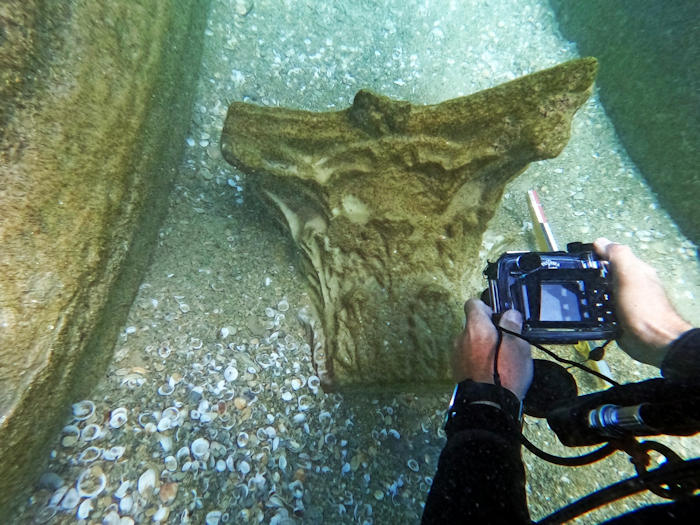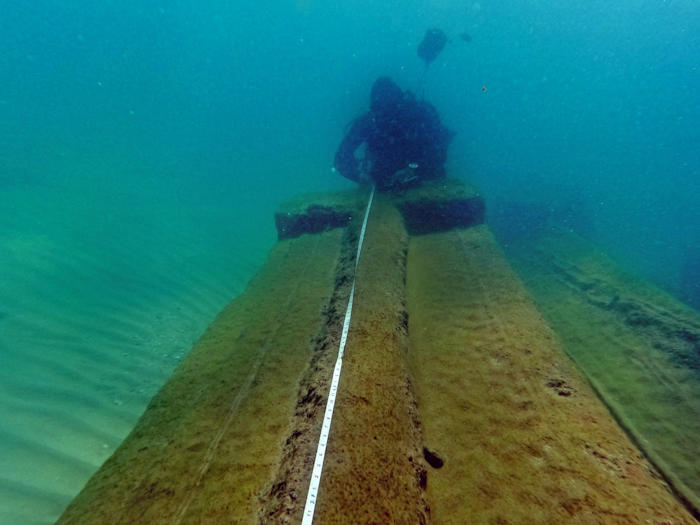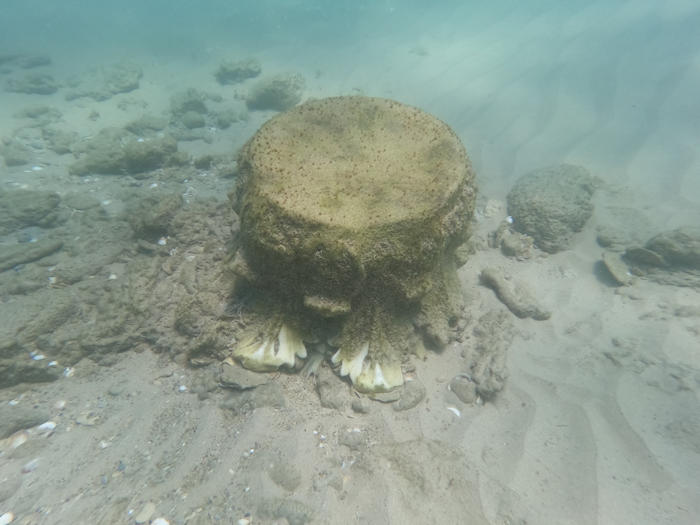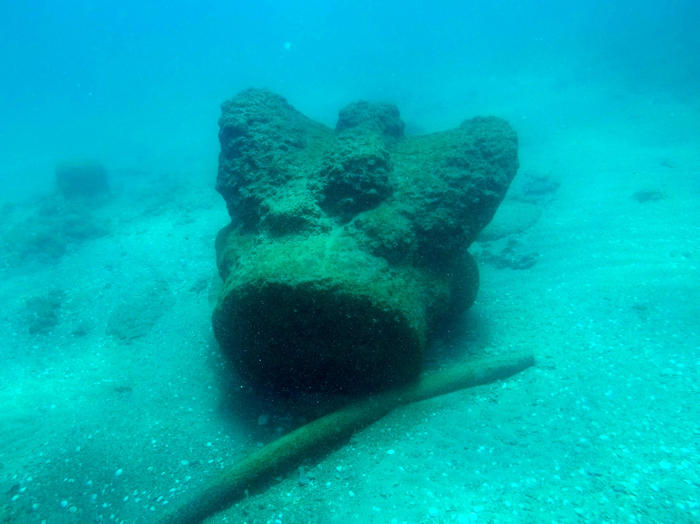Jan Bartek – AncientPages.com – An enormous, rare cargo of 1,800-year-old marble artifacts, borne in a merchant ship that was shipwrecked in a storm, was uncovered in the coastal waters of Moshav Beit Yanai, north of Netanya.
This is the oldest sea cargo of its kind known in the Eastern Mediterranean, composed of Corinthian capitals decorated with vegetal motifs, partially carved capitals, and a huge marble architrave measuring up to 6 meters long. These valuable architectural elements seemed destined for a magnificent public building—a temple or perhaps a theatre.

Credit: Israel Antiquities Authority
The shipwreck was discovered a few weeks ago by Gideon Harris, an experienced sea swimmer, who contacted the Israel Antiquities Authority and reported ancient columns that he observed while swimming at the Beit Yanai beach.
“We have been aware of the existence of this shipwrecked cargo for a long time,” he says, “but we didn’t know its exact whereabouts as it was covered over by sand, and we could therefore could not investigate it. The recent storms must have exposed the cargo, and thanks to Gideon’s important report, we have been able to register its location, and carry out preliminary archaeological investigations, which will lead to a more in-depth research project,” Koby Sharvit, Director of the underwater archaeology unit at the Israel Antiquities Authority said in a press statement.

Credit: Israel Antiquities Authority
From the position of the site and the angle of the cargo on the seabed, it is evident that the ship bearing the cargo was wrecked here after the ship’s crew encountered a storm in the shallow waters and dropped anchor in a desperate effort to prevent the ship from grounding.
“Such storms often blow up suddenly along the country’s coast,” says Sharvit, “and due to the ships’ limited maneuvering potential, they are often dragged into the shallow waters and shipwrecked.”
“From the size of the architectural elements, we can calculate the dimensions of the ship; we are talking about a merchant ship that could bear a cargo of at least 200 tons,” adds Sharvit.
“ These fine pieces are characteristic of large-scale, majestic public buildings. Even in Roman Caesarea, such architectural elements were made of local stone covered with white plaster to appear like marble. Here we are talking about genuine marble.”
“Since it is probable that this marble cargo came from the Aegean or Black Sea region in Turkey or Greece, and since it was discovered south of the port of Caesarea, it seems that it was destined for one of the ports along the southern Levantine coast, Ashkelon or Gaza, or possibly even Alexandria in Egypt.”

Credit: Israel Antiquities Authority
According to Sharvit, Gideon Harris’ report to the Israel Antiquities Authority, has led to resolving a long-debated research issue: “Land and Sea archaeologists have long argued whether the Roman period imported architectural elements were completely worked in their lands of origin, or whether they were transported in a partially carved form, and were carved and fashioned at their site of destination.
The find of this cargo resolves the debated issue, as it is evident that the architectural elements left the quarry site as basic raw material or partially worked artifacts and that they were fashioned and finished on the construction site, either by local artists and artisans or by artists who were brought to the site from other countries, similarly to specialist mosaic artists who traveled from site to site following commissioned projects.

Credit: Israel Antiquities Authority
Gideon Harris was awarded a certificate of appreciation for good citizenship. “Gideon’s report epitomizes the value of a citizen’s awareness regarding antiquities and even more the importance of reporting them to the Israel Antiquities Authority.
See also: More Archaeology News
The cooperation of the community plays an important role in archaeological research. We ask citizens who come across antiquities in the sea to note the exact location and to call us to the site. This provides invaluable information contributing to the history and cultural heritage of the country,” Eli Escusido, Director of the Israel Antiquities Authority said.
Written by Jan Bartek – AncientPages.com Staff Writer





